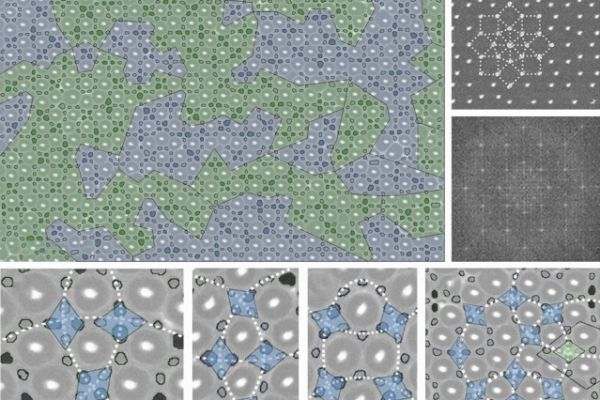Self-assembling materials called block copolymers, which are known to form a variety of predictable, regular patterns, can now be made into much more complex patterns that may open up new areas of materials design, a team of MIT researchers say.
The new findings appear in the journal Nature Communications, in a paper by postdoc Yi Ding, professors of materials science and engineering Alfredo Alexander-Katz and Caroline Ross, and three others.
“This is a discovery that was in some sense fortuitous,” says Alexander-Katz. “Everyone thought this was not possible,” he says, describing the team’s discovery of a phenomenon that allows the polymers to self-assemble in patterns that deviate from regular symmetrical arrays.
Self-assembling block copolymers are materials whose chain-like molecules, which are initially disordered, will spontaneously arrange themselves into periodic structures. Researchers had found that if there was a repeating pattern of lines or pillars created on a substrate, and then a thin film of the block copolymer was formed on that surface, the patterns from the substrate would be duplicated in the self-assembled material. But this method could only produce simple patterns such as grids of dots or lines.
Read more at Massachusetts Institute of Technology
Illustration: Scanning electron microscope images of the crystal structure of the block copolymer material, illustrating their unusual quasicrystal symmetries. Regions with different symmetry properties are highlighted in different colors, and examples of the different patterns, which resemble some ancient tiling patterns, are shown in the accompanying diagrams. Illustration courtesy of the researchers.


